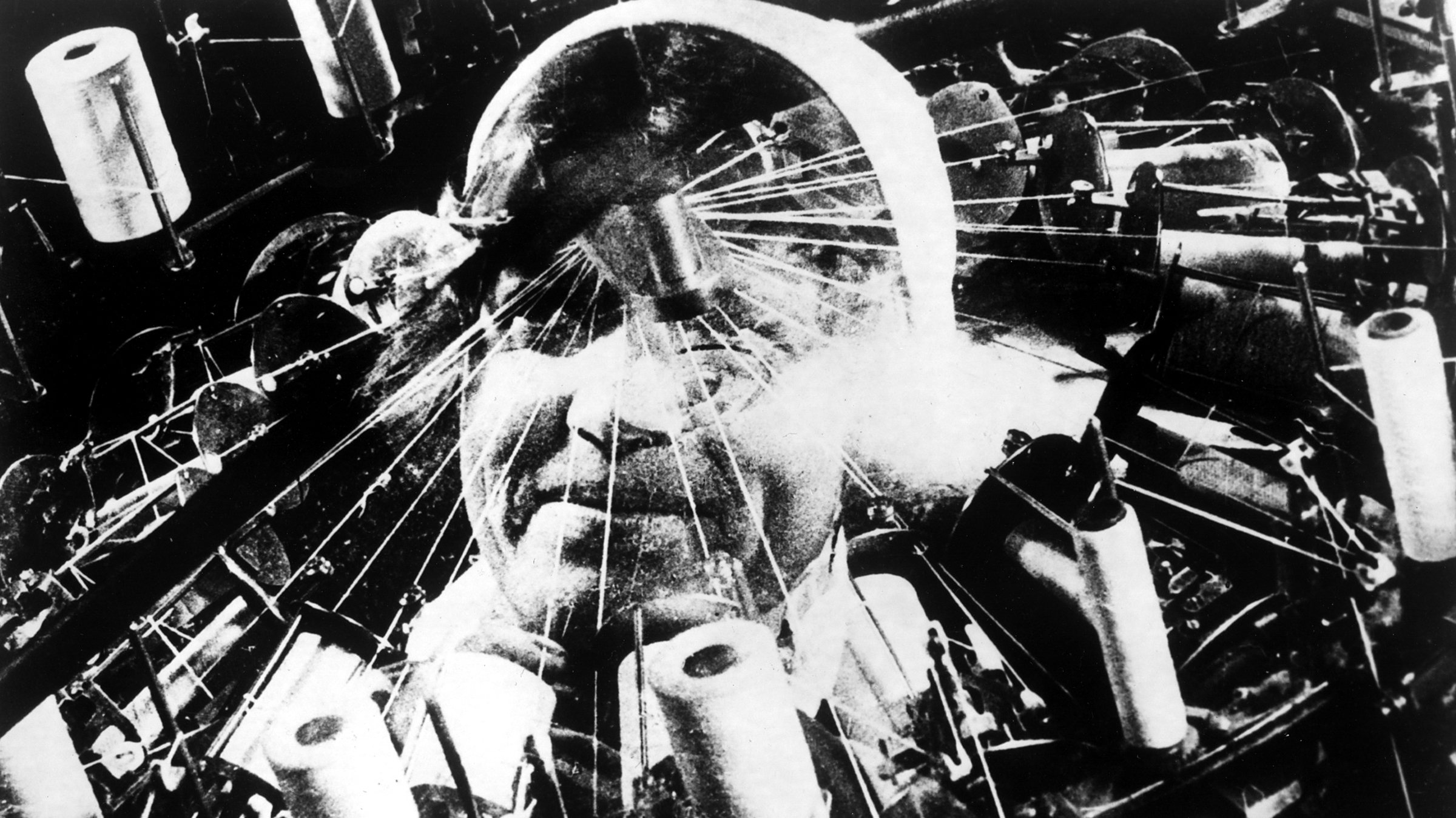That statement by pioneer Soviet filmmaker Dziga Vertov kept reverberating in my brain after my prime movie experience of 1996—watching his silent extravaganza Man with a Movie Camera (1929), with a score performed live by the astonishing three-man Alloy Orchestra, at the 1,500-seat Castro movie palace in San Francisco. The sold-out house handed it a five-minute standing ovation that would have gone on longer if the staff hadn’t had to clear the theater.
Attending Man with a Movie Camera with a crowd alive to every nuance reminded me of how electric it can be when a huge audience—not a clique or a cult or a coterie—connects with something worth appreciating. Vertov’s chef d’oeuvre isn’t merely a celebration of the joy of movement and the gift of sight. With unbounded optimism, Vertov salutes the variety of everyday urban life. Setting his prototype cameraman loose to chronicle an unnamed Soviet city from dawn to dusk, Vertov, without any narrative, wrings lyricism from the commotion in the street and the trolley yard and comedy from newfangled exercise devices and a bureau that handles both divorce and marriage. His protean style deploys every device from split and superimposed images to pixilation and freeze-frames.
If Vertov had been able to attend American art theaters in the 21st century and had seen the reverence bequeathed to academic items like Portrait of a Lady on Fire, he might have been moved to stand up and proclaim (as he did in a 1924 journal), “We are carrying the battle against art cinema, and it is hurled back at us a hundredfold!” When audiences continue to confer respect on snickery things such as JoJo Rabbit, you may echo Vertov’s demand for “Conscious people, not an unconscious mass, ready to yield to any suggestion!” If they applaud the self-conscious “poetry” and spiritual meanderings of a half-dozen Terrence Malick films, you might want to take up Vertov’s slogan “Down with the scented veil of kisses, murders, doves, and conjuring tricks!”
Every now and then, you need a Man with a Movie Camera to remind you of the basic reasons any sane person watches movies: the promise of open-minded, eye-filling explorations of an infinite variety of subject matter; unjaded delight in technique; the revelation of hidden pleasures in milieus you thought you knew from your own experience; and the chance to discover something fresh and to do it with viewers who are lifted beyond schisms of race or class or gender.
“On the movie-house habitué,” Vertov once wrote, “the ordinary fiction film acts like a cigarette on a smoker. Intoxicated by the cine-nicotine, the spectator sucks from the screen the substance which soothes his nerves. A cine-object made with the materials of newsreel largely sobers him up, and gives him the impression of a disagreeable antidote to the poison.” Aided by the suitably named Alloy Orchestra, Man with a Movie Camera defogs the brain and renews the gusto of any movie addict.
Updated from a piece first published in SF Weekly on January 1, 1997. MICHAEL SRAGOW is a contributing editor for Film Comment and the author of Victor Fleming: An American Movie Master.

